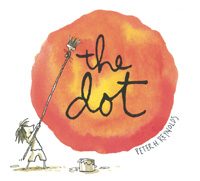Today our lecture was on how creative partnerships can work to improve the delivery of the arts in education. We were looking at different projects that have been ran in schools with other partnerships and how beneficial they can be, particularly a parkour project. This was good to see the type of projects which can occur and how to get involved with them in the future. Our inputs were Music and Dance.
Dance
In todays Dance class we continued to practice our dance routine and considered what we needed to do to make it look better and how to improve on it. It was quite difficult to remember the order of all the steps which I’m sure children would see as a challenge but still find enjoyable. We then videoed the final routine. From doing this we were able to watch the performance and evaluate it. This was very beneficial as when seeing how the routine actually looked we were then able to truly identify what could be done to allow us to properly improve. I think this would be useful to do with a class as the children would love to se themselves and how the finished routine looked.
I have experienced the energy and excitement of presenting/performing for audiences and being part of an audience for other peoples presentations/performances. – EXA 0-01a / EXA 1-01a / EXA 2-01a
In order to effectively evaluate ourselves and our peers we were given an evaluation sheet highlighting various aspects to consider such as rhythm, timing, energy, memory etc. We gave ourselves and one of our peers 2 stars and 1 wish. This is good as it encourages children to give constructive criticism and also encourage their peers by highlighting what they do well.
I can analyse technical aspects of dance, make informed judgements and express personal opinions on my own and others work. EXA 4-11a
It was very satisfying going through the process of creating our own dance moves, putting them together in a routine and watching it back and i think it is definitely something children would enjoy.


We finished off the session by having some fun doing social dancing and being shown how to make it more relevant and enjoyable for children by dancing to current songs rather than the traditional Scottish style musical pieces.
Music
This weeks music input was focussed on pulse and rhythm. We began to learn how to read sheet music and discussed the names of different music notes and what they mean. We participated in an activity whereby we used shapes to represent different musical notes therefore making it easier to understand. We used drum sticks / beaters to keep the rhythm, this was a useful activity as it allowed us to understand rhythm at a very basic level and begin to get the hang of it.
We then had the opportunity to transfer the basic skills we had learnt onto the instruments. Using xylophones we were to form a piece for 32 beats using the notes C, D, E, G and A to the backing track ‘hit the road jack’ which was played on the piano. We went round the class and individually played our own 32 beats. This was beneficial as it showed how easy it is to create your own piece of music when your musical ability is limited, this would be great to do with children as it would boost their self confidence with music.
“I can use my voice, musical instruments and music technology to discover and enjoy playing with sound, rhythm, pitch and dynamics.” EXA 1-17a












